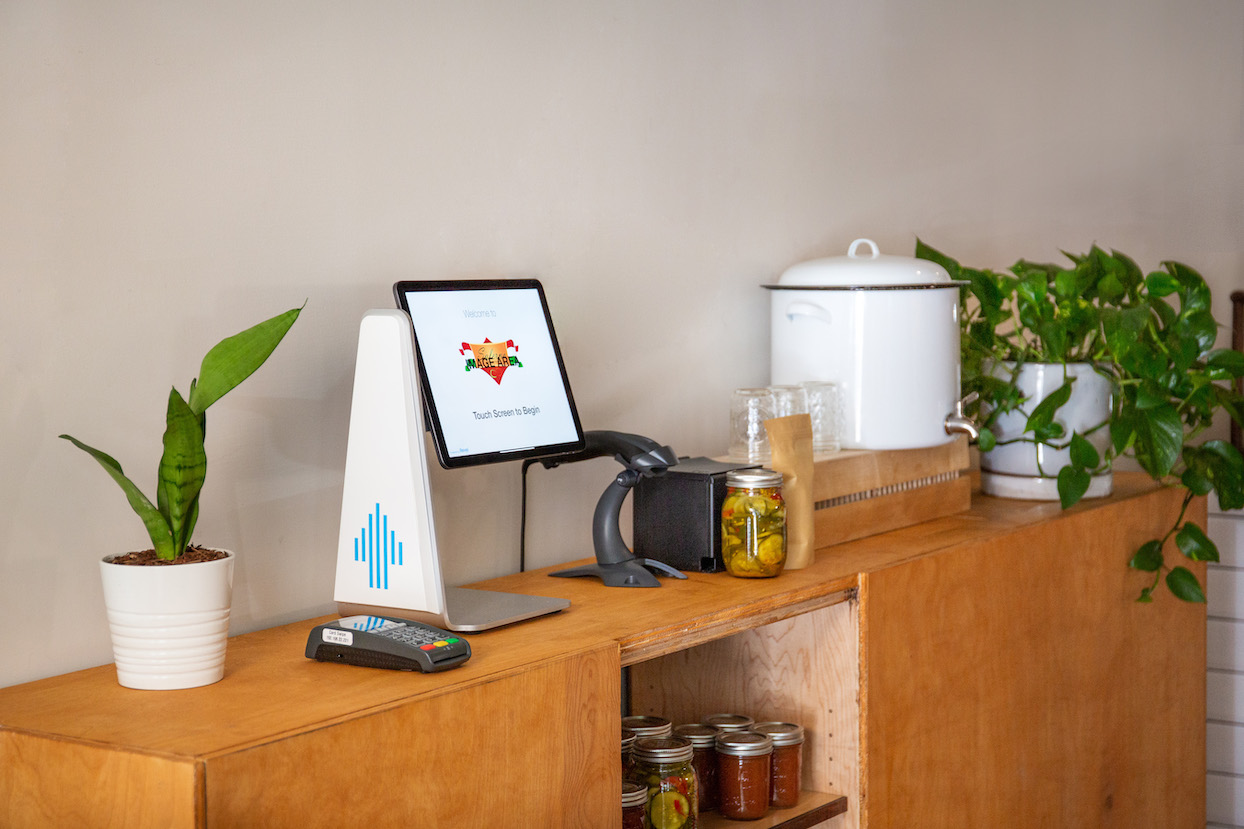Call Sales: +1 (833) 437-3835
Call Sales: +1 (833) 437-3835
Julie Holkeboer | May 29, 2020 |

Self-service kiosks are a hot topic for today’s restaurateurs as they continually seek new ways to engage digitally-savvy customers. With speed of service and order accuracy typically seen as the primary benefits of this technology, self-service kiosks also lead to more upselling opportunities and reduced labor costs.
Take QSR giant Moe’s Southwest Grill, which will begin rolling out all digital, kiosk-only locations in Pittsburgh and Charlottsville, Virginia during the first quarter of 2020. These self-service options will service the many college students that populate the pilot cities. It is an effort to attract millennials craving digital-first ordering methods. Moe’s decision to alter its guest experience makes sense when you look at the numbers. Digital orders have grown by 23% over the past four years and are expected to continue at a double-digit clip through 2020.
Other major QSR players have rolled out self-service kiosks including Yum Brands (KFC and Taco Bell), McDonald's, Panera Bread, Wendy's, and Subway, proving that this data-backed trend is here to stay and will continue to evolve. Let’s dive into some of the pros, and cons, of self-service kiosks.
Self-service kiosks often wow customers with their speed and ability to build customized orders. With seamless integrations for CRM and loyalty programs, customers won’t feel like they’re getting a lesser experience. Instead, they are greeted with an experience they’re used to, completed at their own pace.
When placing an order using a self-service kiosk, customers aren’t rushed to complete their order and can confidently skip the line. According to Tillster’s 2019 self-service kiosk survey, if the traditional line to the cashier reaches four or more people, customers prefer to order from self-service kiosks instead. Helping reduce lines during your busiest hours can help cut down on labor costs and keep customers happy. And as customers opt to maintain six inches of distance between each other while waiting, kiosks can help prevent out-the-door lines and keep transactions brief.
If you’re interested in opening up a new revenue stream for your business, these kiosks also give restaurants the ability to open self-service grab-and-go selections on site that are completely self-guided.
According to Tillster, more than 65% of customers said that if self-service kiosks were offered, they would make more return trips. When lines are of equal length, 30% of those customers said that they’d prefer to order from a kiosk over a cashier. As customer preferences shift to focus on speed and convenience, more and more restaurants are shifting their investments to technology that accommodates these preferences.
As COVID-19 continues to impact the hospitality industry, self-service kiosks also present customers with an intuitive, tech-friendly option that often feels safer and limits human-to-human interaction. Customers are given the keys to control the ordering process, empowering them to patronize your business during times of uncertainty.
Not all customer preferences are equal, however. Although there has been an unmistakable uptick in the use of self-service kiosks and other digital-first options like mobile online ordering, not all customers desire a contactless ordering process. Understanding your audience and learning more about your customers’ preferences over time will help you find the perfect balance between contactless and more traditional ordering methods.
Using technology to make ordering and payment easier for your customers is becoming the norm across restaurants both big and small. Revel makes adapting to these digital trends easy with its cloud-based technology built for the future.
With Revel’s self-service kiosk option, encourage repeat customers with modern technology that empowers them. Learn more about what a digital-first point of sale can do for your business.